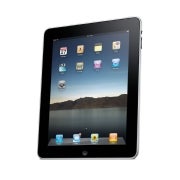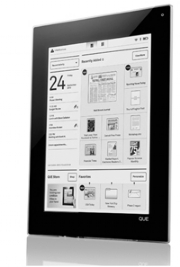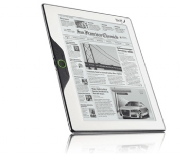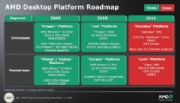The new Apple iPad's color multitouch display will clobber -- but not kill -- the blossoming e-reader market, which includes Amazon.com's Kindle, the Sony Reader and other devices that use gray-scale displays and slower interfaces, some analysts said.
"Apple 's full-color, full motion [iPad] device makes not only netbooks, but any product with an E Ink display look tired and dated," wrote Yankee Group analyst Carl Howe in a blog after spending a few minutes using the tablet device.
With the first iPads expected to go on sale in March, Amazon, Sony and other companies selling e-readerdisplays using various gray tones will have only a year or so to come up with color displays, or they could be seriously hurt by a second generation iPad, said James McQuivey, an analyst at Forrester Research.
The situation is much worse, he said, for vendors that have announced but not launched their gray-scale e-reader devices, such as the Que from Plastic Logic and the Skiff from Skiff LLC .
"If an executive is considering a Que, but then looks at the iPad that allows him to view multimedia and do light work, he'll end up with the iPad," McQuivey said. And the iPad will win out on price, with the cheapest Wi-Fi-only 16GB v
In the iPad demonstration by Apple CEO Steve Jobs and others, the Times could be read in the iPad and then embedded color video segments could be launched with a finger touch to learn more about an article or issue.
Such embedded video capabilities were demonstrated at CES in early January by Skiff, which is developing e-reader capabilities for dedicated devices and to use in tablet devices with color screens such as the Viliv tablet.
At CES, Skiff President Gilbert Fuchsberg describedsome advantages of e-readers over color tablets, noting that E Ink displays can be read for hou
In general, tablets are also heavier and can weigh three to five pounds, Fuchsberg noted. The iPad weighs 1.5 pounds and is at least a half pound heavier than the largest e-readers.
McQuivey said iPad users who rely on it for prolonged reading "are going to experience eye strain and will need to blink more and carry eyedrops," he said.
"You can only stare at direct illumination for a short time before it strains the eyes, and sitting in front of many displays that are broadcasting photons into your eyeballs is very disconcerting for the eyes," McQuivey said.
As such, he predicted that the iPad will be for users who are light readers but also do a lot of Web browsing and download music and video. "The iPad is really a multifunction device, and the message Apple gave was that it's not really about it being [just] an e-reader," he said.
Despite concerns about the iPad's impact, Howe said in an e-mail interview that the iPad won't kill the e-reader market. "Rather, it just raises the bar for competitors," he said. "Once the iPad is shipping, good enough [e-readers] won't cut it anymore except for the most cost-conscious buyers."
Both Yankee Group and analyst firm In-Stat are still bullish on the e-reader market. In-Stat said nearly 1 million e-readers shipped in 2008, and that number will growing to 28 million in 2013. Meanwhile, Yankee Group said sales of e-readers hit about $400 million in 2009, but will explode to $2.5 billion in 2013.
"Just because iPad has launched and is an impressive device, In-Stat cautions individuals who are quick to write off the e-reader segment," In-Stat said in a statement.
Stephanie Ethier, an In-Stat analyst, said that future generations of e-readers will evolve and "the line between e-readers and tablets will blur substantially ... within the year."
Matt Hamblen covers mobile and wireless, smartphones and other handhelds, and wireless networking for Computerworld . Follow Matt on Twitter at @matthamblen , send e-mail to mhamblen@computerworld.com or subscribe to Matt's RSS feed .








